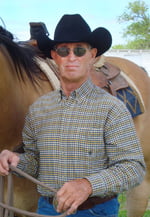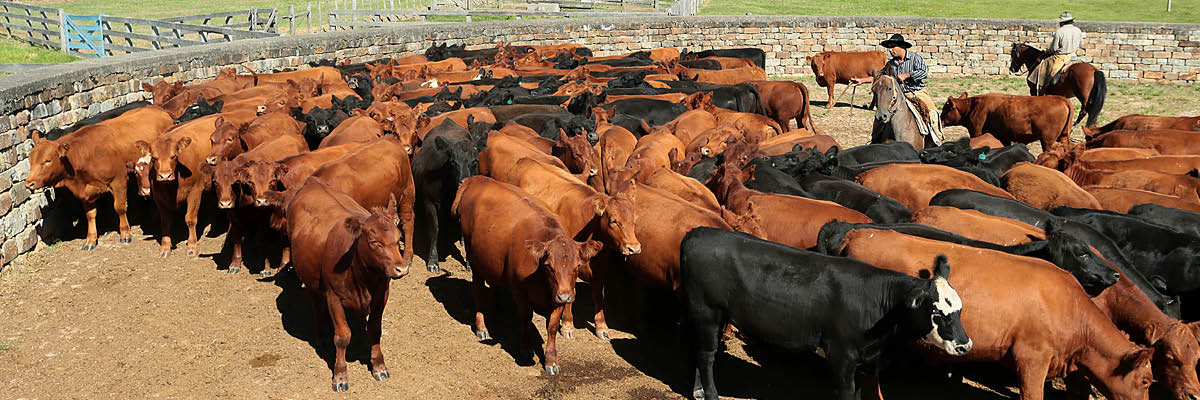Low-stress Cattle Handling to Improve Profit Potential and Cattle Welfare
I have had the pleasure of watching a true master in the art and science of low-stress cattle handling at work. Dr. Tom Noffsinger has educated his mastery of stockmanship to thousands of cattle producers over the United States.
 Watching Dr. Noffsinger’s demonstrations became clearer to me that the idea of taking a “systems approach“ combining a low-stress working facility with a low-stress management style and monoslope feedlot design may significantly improve cattle welfare as well as profit potential.
Watching Dr. Noffsinger’s demonstrations became clearer to me that the idea of taking a “systems approach“ combining a low-stress working facility with a low-stress management style and monoslope feedlot design may significantly improve cattle welfare as well as profit potential.
For example, there are many different types of working area designs out there but the two most common are based on a system that leads to a crowd tub system or a system that includes a “Bud Box”.
Either system may be used in a monoslope beef barn. Both work very well as long as the producer is oriented in the appropriate way to work cattle. Personally, I prefer the Bud Box system because it is typically the lower cost solution.
If you are interested in designing a Bud Box system for your beef barn there are several resources for guidance on system design.
One I found helpful is “Designing a Bud Box” by Extension Livestock Specialists Ron Gill Ph.D. and Rick Machen Ph.D.
In it the authors point out that there is “nothing magical or mystical about a Bud Box. It is a design that allows you to position yourself correctly to facilitate cattle flow out of the box into either the crowd alley leading to a chute or to a single-file load out.”
Typically a Bud Box needs to be 12 to 14 feet wide and 20+ feet deep depending on the number of cattle needed to flow through the system at any given time.
But having the box design right does not mean it will work. To make that happen we need to become students of low-stress cattle handling.
I say “students” because it seems we never learn it all. As you investigate this subject online you’ll see that outside of terminology used by various experts the basic themes of low-stress stockmanship are pretty much the same.
The first consideration in facilities design is that cattle are prey animals and feel safer with other cattle than alone.
So we facilitate that in pen design and move animals in groups. (And we avoid getting one-on-one with a frightened animal.) We also observe that once moved, cattle tend to go back to where they came from. So we use that tendency to apply pressure to move them in the direction we want them to go.
Because it is the nature of cattle to move in the direction they are looking we use our bodies to point them in the direction we want them to move.
Cattle like to see us at all times so we avoid approaching them from behind. Ultimately, effective cattle handling comes down to putting the right amount/type of pressure on the cattle to move individuals or the group in the direction needed.
And in applying that pressure we need to be aware of our body positioning as well as the angle and speed at which we approach them.
Bottom line is that our cattle are trainable. And they want to please us. So we can fight it and force our will on them, or we can take the shorter, faster, less stressful and more profitable route of finessing them to do our will through properly designing our monoslopes to facilitate low-stress handling methods.
It’s not rocket science, but designing for and learning low-stress cattle handling techniques does take a commitment and some time to practice.
Ready to learn more? Request your FREE Improving Cattle Profits Info Kit Now.
Do you have more questions that are not covered in this article? If you need help designing and planning, please contact Summit Livestock Facilities at 800.213.0567 or click here to email us. If you are ready to get a price, click here to request a quote and a member of our customer engagement team will help you determine the next steps of your project.


